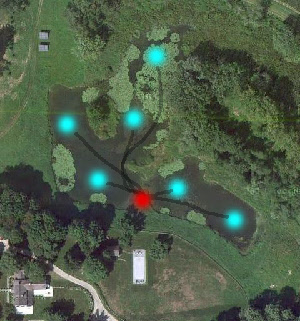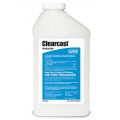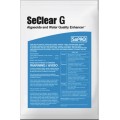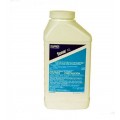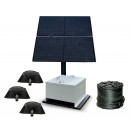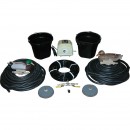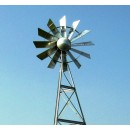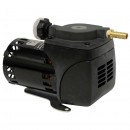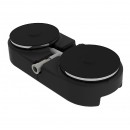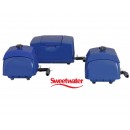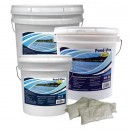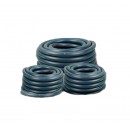Shopping Cart
0 item(s) - $0.00- Pond Sealant
- Aeration Systems
- Air Pumps & Compressors
- Algae Control
- Algaecides & Herbicides
- Bacteria & Clarifiers
- DC Compressors & 12V Pumps
- Diffusers & Airstones
- Dock Bubblers & Deicers
- Dyes & Colorants
- Fountains
- Large Ponds & Lakes
- Muck Removal
- Nozzles & Fountain Heads
- Pond Liner
- Pond Pumps
- Tubing & Accessories
- Water Level Control & Gates
- Water Treatments
- Windmill Aeration
- Commercial & Industrial Supplies
- Solar Aeration
-
Information & Articles
- - Aeration: The Key To Success
- - Air Compressors: Rotary Vane
- - Air Pumps: Linear or Diaphragm
- - Airline & Tubing for Aeration Systems
- - Algae Control
- - Aquatic Plants & Weeds in Ponds
- - Building A Dock Bubbler System
- - Building A Pond: The Basic Steps
- - Calculating Dissolved Oxygen Levels
- - Compost Aeration & Compost Tea
- - Diffusers: The Key To Efficient Aeration
- - Dock Bubblers & Deicers
- - Duckweed Control
- - Fountain For Ponds, Lakes & Small Gardens
- - Grease Trap Bacteria & Enzymes
- - Mosquito Control in Ponds
- - Muck: Removing Sludge & Pond Muck
- - Pond Aeration Systems
- - Pond Dyes: Aesthetics & Growth Control
- - Pond Liners
- - Pond Pumps: Submersible & External
- - Pond Winterization: Prepare Your Pond for Winter
- - Septic Bacteria Treatments
- - Solar Aeration, Solar Pumps & Solar Systems
- - Solar Aerator Parts List
- - Solar DC & 12V Pumps
- - Weeds & Eurasian Milfoil
- - Windmill Aeration & Windmill Pumping
- - Winterization of Ponds and Lakes
- - Beneficial Bacteria: Helping A Pond Naturally
- - Algae: Basics of Pond Algae
- - Oxygen Transfer Rates, SOTR & Pumping Rates of Aeration Systems
- - Pond Weed & Algae Control
- - Questions & Answers
- - Waterfalls: Building a Waterfall
- - Weighted Airhose, Airline & Tubing for Ponds
- - Links to Suppliers & References
- Consultations & Design Assistance
- Books & Guides
- Links & Resources
Duckweed Control

Duckweed is an agressive pond weed that covers a pond quickly with a green scum. 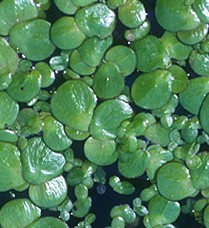 Duckweed (Lemnaoideae) is something I am actually very fond of...of course when a large pond is infested with this plant it is no fun but in smaller water gardens and backyard ponds duckweed can actually be a helpfull addition to the ecosystem! Duckweed (Lemnaoideae) is something I am actually very fond of...of course when a large pond is infested with this plant it is no fun but in smaller water gardens and backyard ponds duckweed can actually be a helpfull addition to the ecosystem!
Myself, I've actually gone to the garden store and bought a container full of duckweed to add to my backyard pond...it cost me $5 and my wife asked me if I was losing my marbles because duckweed can be found in almost any farm dugout or stagnant swamp in the area! Why You May Love Duckweed:
Duckweed is a small delicate plant that drifts on the pond surface, filling in spaces between the lily pads, creating a lovely green blanket across the pond. This provides a lush habitat for frogs and fish and insects of the pond.
CONTROLS 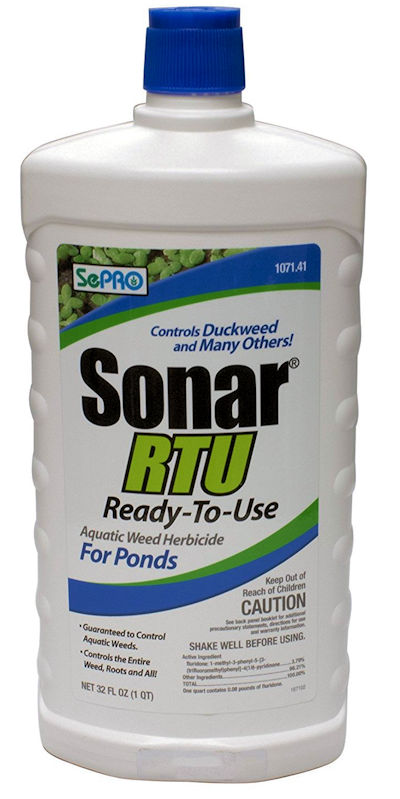 Sonar ready-to-use RTU represents an exciting new era in pond weed management for the do-it-yourselfer the innovative new RTU formulation allows anyone to make water usable for recreation, bring fish populations back into balance and restore property values. We're so sure that applications of sonar RTU conducted according to directions will control target aquatic vegetation listed on the label that we'll work with you until you see the results you expect. There's never been a better time to trust your lake or pond to sonar. Sonar RTU and duckweed many pond owners consider duckweed to be their toughest aquatic weed problem. Duckweed is a very comma on nuisance aquatic weed that is spread from pond to pond via waterfowl or other wildlife. While it is comma only mistaken for algae, duckweed is actually a tiny plant with an explosive reproductive capacity that can completely cover a pond in just a few weeks to the point that the infested waterbody resembles a golf-course green. Fortunately, no other aquatic herbicide is more effective on duckweed. Sonar provides complete, long-lasting control of duckweed and other stubborn unwanted aquatic vegetation. Aquatic herbicides and pond weed killers Aquatic algaecides and herbicides are very effective at controlling duckweeds and other unwanted invasive pond species. You should understand that such algae problems, well...it's not reaslly an algae but an aquatic weed plant, if they are treated with herbiceds can lead to a dependance or resistance and scientists generally agree that chemical selection pressure that is applied applied to aquatic weed populations for a long enough period of time eventually leads to resistance. This means that while the chemical pond weed killer may work quickly and effectively for the first few years, unless you are adding a positive treatment with aeration and natural beneficial bacteria you will just be "chasing the dragon" so to speak!
2 - The Natural Way
White Cap Selective Herbicide Control aquatic weeds and grasses in fresh water ponds, lakes, and drainage/irrigation canals with WhiteCap™ SC selective herbicide, a proven reformulation of the popular active ingredient fluridone. WhiteCap effectively controls a wide range of floating, submersed and emersed aquatic vegetation, including Duckweed, Hydrilla, Bladderwort, Watermilfoil, Naiad, Elodea, Water-lily, Pondweed, and Coontail See The List of Aquatic Weeds that White Cap SC will control before you buy. Email us if you're not sure.
Susceptible aquatic weeds absorb WhiteCap SC through the shoots and roots. For effective control, contact of WhiteCap with the target plant must be maintained for at least 45 days. Effective control is reduced if conditions exist that dilute the concentration of WhiteCap in the water to below labeled rates.
Suggested bApplication Rates For Duckweed Here are some websites we recommend if you are looking for more information. Washington State Department of Ecology https://www.ecy.wa.gov/Programs/wq/plants/pla ntid2/descriptions/lemmin.html Lemna minor (lesser duckweed) and Lemna trisulca (star duckweed) Duckweeds are among the world's smallest flowering plants. Individual lesser duckweed plants are tiny, round, bright green disks, each with a single root. USDA.gov https://plants.usda.gov/java/profile?symbol=LEVA PLANTS Profile for Lemna valdiviana (valdivia duckweed) | USDA PLANTSA PLANTS profile of Lemna valdiviana (valdivia duckweed) from the USDA PLANTS database.: Kingdom Plantae – Plants Subkingdom Tracheobionta – Vascular plants Superdivision Spermatophyta – Seed plants Division Magnoliophyta – Flowering plants Class Liliopsida – Monocotyledons Subclass Arecidae Order Arales Family Lemnaceae – Duckweed family Genus Lemna L. – duckweed Species Lemna valdiviana Phil. – valdivia duckweed Wikipedia https://en.wikipedia.org/wiki/Lemnaoideae Lemnaoideae - Wikipedia, the free encyclopedia 24 May 2009 ... Duckweed is an important food source for waterfowl and are eaten by humans in ... Classification of the duckweeds in the family Lemnaceae is ... en.wikipedia.org/wiki/Lemnaoideae - Cached - Similar - Lemna - Wikipedia, the free encyclopediaLemna is a genus of free-floating aquatic plants from the duckweed family. .... Lemna Ecotox testing Duckweed growth inhibition tests and standardisation ... Guppies.com https://www.guppies.com/forums/showthread.php/duckweed-and-waterquality-18686.html Duckweed and waterquality... a blessing in disguise. In fact, duckweed does much more than suck up every particle of Nitrate in your tank. In depth study will reveal that duckweed attacks ammonia vigorously, as well as Nitrates, Nitrites and just about any other molecule with the nitrogen atom in it, lol. In addition to that, duckweed sucks up phosphorus like a thin milkshake, actually removes suspended solids, and organic material and even other toxins!. As if that weren't impressive enough, it produces oxygen like nobodies business! Homemade Duckweed Skimmer https://forums.pondboss.com/ If you are looking for a homemade duckweed skimmer then we saw on the PondBoss Forums of a fellow who used a "prickly rope" that he rigged up using a simple nylon rope and zip-ties to create an ingenious pond skimmer system that basically corrals the duckweed and traps it in the circle of the "prickly rope" where it can be easily removed. You have to see it to believe it and I bet it works too!
|
|||||||||||||||||||||||||||||||||||||||||||||||||||||||||||||||||

The Pond Report
Pond Supplies for private pond owners and commercial pond managers.
Pond & lake products and treatments for natural pond care and aquatic management
Fast and free shipping from our Florida, California & Oklahoma Distribution Centers.
ThePondReport.com is a participant in the Amazon Services LLC Associates Program, an affiliate advertising program designed to provide a means for sites to earn advertising fees by advertising and linking to Amazon.com. Read our disclosure policy regarding the affiliations and commercial incentivizations of The Pond Report web site.
© 2006 - 2025

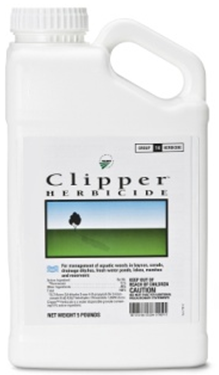 Clipper is a new Aquatic Herbicide that is completely safe for use in lakes and ponds. Clipper Aquatic Herbicide selectively controls a number of invasive and nuisance aquatic plants, including submersed plants such as hydrilla, Eurasian watermilfoil, curlyleaf pondweed and cabomba as well as floating plants such as duckweed, giant salvinia, water lettuce and watermeal. The active ingredient in Clipper is 51% Flumioxazin, which works swiftly and then dissipates quickly from the water column and does not accumulate in sediment. Clipper is a water soluble granular product that is easy to apply, mix, and handle and offers reduced PPE requirements.
Clipper is a new Aquatic Herbicide that is completely safe for use in lakes and ponds. Clipper Aquatic Herbicide selectively controls a number of invasive and nuisance aquatic plants, including submersed plants such as hydrilla, Eurasian watermilfoil, curlyleaf pondweed and cabomba as well as floating plants such as duckweed, giant salvinia, water lettuce and watermeal. The active ingredient in Clipper is 51% Flumioxazin, which works swiftly and then dissipates quickly from the water column and does not accumulate in sediment. Clipper is a water soluble granular product that is easy to apply, mix, and handle and offers reduced PPE requirements. 